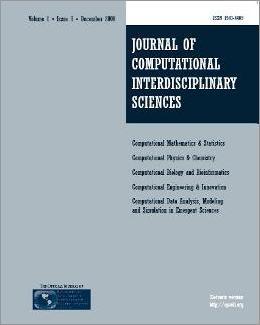
Editorial Office:
Management:
R. S. Oyarzabal
Technical Support:
D. H. Diaz
M. A. Gomez
W. Abrahão
G. Oliveira
Publisher by Knobook Pub


Editorial Office:
Management:
R. S. Oyarzabal
Technical Support:
D. H. Diaz
M. A. Gomez
W. Abrahão
G. Oliveira
Publisher by Knobook Pub
doi: 10.6062/jcis.2013.04.03.0076
A. Bomfin Jr., R. D. Coelho dos Santos
The objective of this study is to identify homogeneous rainfall patterns in the state of São Paulo, in order to obtain a better understanding of its climatology. For this, we used a visualization method based on K-Means, a non-hierarchical clustering algorithm, and a set of rainfall data from GPCC (Global Precipitation and Climatological Centre) of NOAA (National Oceanic and Atmospheric Administration), available at point grid 0.5 x 0.5 (Latitude x Longitude), which are generated by surface meteorological stations, satellite rainfall measures and numerical weather prediction models. Initially, to ensure an adequate level of variability in the regions to be classified, some tests were developed in order to define an empirical number of patterns required by the K-Means algorithm. Thus, it was observed that the state of Sao Paulo can be divided in to six regions of homogeneous rainfall, where the results were evaluated in series of 30 years (1981-2010), by consecutive decades (1981-1990, 1991-2000 and 2001-2010) and also by seasonal periods (Dec-Jan-Feb, Mar-Apr-May, Jun-Jul-Aug and Sep-Oct-Nov). The results, due to its spatial and temporal quality, as well as its low variability, show a good accuracy in identifying the rain patterns. Their singularities in the evaluated periods are presented through graphical models, which also shown that the northern, western and central west are more homogeneous and more defined than the south and southeast regions, because the rains vary more strongly due to proximity to the ocean and Serra do mar and Mantiqueira mountains ranges.
Data Mining, Rain Patterns, K-Means.
[1] GPCC, Global Precipitation Climatology Centre [online]: http://www.esrl.noaa.gov/psd/data/gridded/data.gpcc.html K-Means Algoritm, [online]: http://en.wikipedia.org/wiki/K-means_algorithm Segmentação de Imagens e Algoritmo K-Means, UFPR-Curitiba 2007 Depar- tamento de Engenharia Elétrica George Kolossosk
[2] RODRIGUES, M.F.G.,AZEVEDO, P.V., SILVA, B.B. Uso da classificação hierárquica na identificacao de regiões pluviometricamente homogêneas no Estado do Ceará In: CONGRESSO BRASILEIRO DE METEOROLOGIA, 9,Campos do Jordão-SP. Anais. Sociedade Brasileira de Meteorologia p. 275-276,1996
[3] NERY, Jonas Teixeira; SILVA, Eraldo Schunk; CARFAN, Ana Claudia. Distribuição da precipitação pluvial no Estado de São Paulo. VI Simpósio Brasileiro de Climatologia Geográfica, v. 6, 2004.
[4] GARCIA, Jose Roberto Motta; FINAL DA DISCIPLINA PRINCIPIOS, Relatŕio; DE DADOS, Aplicações de Mineração. MINERAÇÃO DE DADOS PARA IDENTIFICAR AGRUPAMENTOS